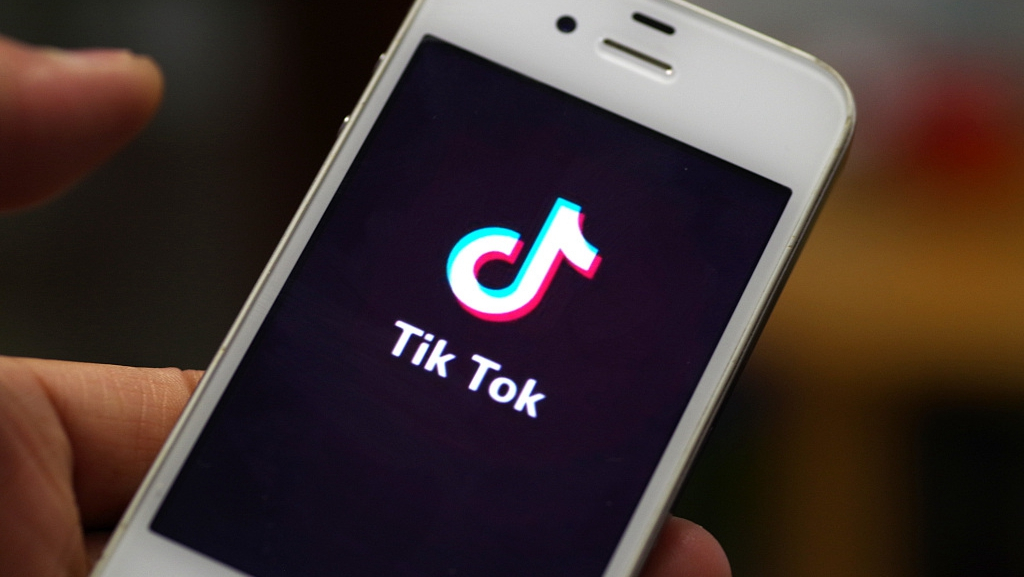
From the People's Daily app.
And this is Story in the Story.
While internet celebrities in other places rack their brains for wonderful pictures to impress others, those in China have found a new way to stand out – and that’s with snap gifs.
Splits, Ballet rotation, a sudden Princess hug by "boyfriend"... there is nothing social media celebrities in Hangzhou, capital of China's Zhejiang Province, cannot do in a staged snap gif to catch your attention.
Street snap, or street photography, which was originally invented to highlight popular elements in normal daily life, is apparently being redefined in China by the new snap gif trend.
The trend was started by popular short-video streaming platforms, such as TikTok and Kuaishou, which makes it easier for those who want to make a name for themselves and, of course, fortunes.
Today's Story in the Story looks at this new snap gif fad, plus other apps that are leading modern social media trends in China.

Street photographers take pictures at Sanlitun Taikoo shopping arcade in Chaoyang district, Beijing, on July 3, 2019. (Photos: Global Times)
Every time I go to the West Lake - a famous scenic spot in Hangzhou - I see dozens of male and female models walking around. There are so many photographers following closely, but they pretend to be surprised and shy when the camera looks at them, a net user complained on China's Twitter-like Sina Weibo.
There are no beautiful clothes, only overexerted performances, netizens said.
Behind the celebrities and models, there are photography teams, incubator companies and, at last, products suppliers, insiders told the media.
When these pictures, short videos and gifs are uploaded to the internet, advertisements for the models' clothes, bags and shoes will be attached.
By this measure, Zhou Xiang, a garment company owner in Hangzhou, told the media that he once sold about 600,000 items of clothing in a single day.
The companies usually divide the incomes equally with the celebrities, according to Zhou.
Photographers also benefit from the business. They can reportedly gain as much as 30,000 yuan ($4,360) a day to take photos of celebrities.
Another social media phenomenon that has taken off in China is short video platforms such as TikTok.
It was the most downloaded in Apple's app store in the first quarter of 2018, beating social media giants Facebook and Instagram with 45.8 million downloads.
Night show TV host Jimmy Fallon even brought his pop Midas touch to the platform, uploading lip-sync battles and weird sketches almost guaranteed to go viral.
Amid all this hoopla, one thing stands out. TikTok is Chinese.
The app is the brainchild of the Beijing-based company ByteDance, whose meteoric rise has challenged China's tech triumvirate of Baidu, Alibaba and Tencent (BAT).

(Photo: CGTN)
Although the country has pushed for international recognition of its brands, domestic companies have so far gone against established foreign competitors in fields ranging from household appliances to e-commerce. TikTok's success, on the other hand, shows a path forward in an area Chinese brands are not known for overseas – pop culture.
Although celebrities such as Fallon and skater Tony Hawk have raised TikTok's profile, an app can gain no higher honor in the digital era than being associated with Internet slang.
For TikTok in the US, that term is "cringe," which describes content that is embarrassing but hilarious. One video, for instance, had a boy and a girl in cosplay lip-syncing to dialogue from "Fifty Shades of Grey."
The app also has cross-platform appeal, as its videos have been shared millions of times on Twitter and YouTube.
The app certainly isn't the first of its kind, nor has it been around the longest. Vine was one of the first platforms to embrace short video as a medium for expression in the age of social media. Users could create clips that looped for six seconds, which sometimes became viral memes and shared widely just like static images.
The service debuted in 2012, was acquired by Twitter in 2013, and its mobile app discontinued in 2016. The broad adoption of short video by larger platforms and failure to monetize contributed to Vine's downfall.
On the other hand, TikTok's domestic counterpart, Douyin, was released a few months after the Vine app shuttered. The overseas version debuted in 2017, one year later.
Another short video platform, Kuaishou, has Tencent as its major financial backer. Unquestionably, all these apps have become big business.
Alongside its rival TikTok, Kuaishou is developing a short video sector that could be worth as much as 96.2 billion yuan ($15 billion) by 2020, according to research by HIS Markit.
(Produced by Nancy Yan Xu, Brian Lowe, Lance Crayon and Chelle Wenqian Zeng. Music by: bensound.com. Text from Global Times and CGTN.)


